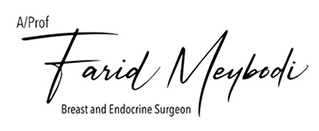Breast Abscess
What is a Breast Abscess?
A breast abscess can be defined as a localised, painful pus-filled lump that develops inside the breast. It most commonly occurs in women who are breastfeeding but can also affect non-breastfeeding women.
Causes of a Breast Abscess
A breast abscess is usually caused by a bacterial infection. The bacteria enter through a crack or rupture in the nipple or skin of the breast resulting in a breast infection known as mastitis. This is an inflammation of the breast tissue, milk glands or ducts in breastfeeding women. An abscess is an empty space in the breast that fills with pus as a result of the infected milk ducts.
Signs and Symptoms of a Breast Abscess
Some of the common signs and symptoms of breast abscess include:
- Pain in the breast
- A swelling or lump in your breast
- Warmth, tenderness and redness in the breast area
- Fever, chills and a general feeling of malaise
- Unusual nipple discharge
- Enlarged or tender lymph nodes in the armpit near the affected breast
Diagnosis of a Breast Abscess
Your doctor will assess your symptoms, take your medical history, and perform a thorough physical examination of your breast to check for lumps or abscesses. If a lump is suspected, your doctor may recommend an ultrasound and aspiration biopsy in which a needle is inserted, and fluid from the abscess is withdrawn for microscopic analysis to check for infection.
Treatment for a Breast Abscess
In order to treat a breast abscess, your doctor may employ different methods of treatment, such as antibiotics, self-care measures and in some cases, surgical drainage of pus accumulation.
Antibiotics: Broad-spectrum antibiotics, such as penicillin, erythromycin, and cephalosporins, are used to treat the infection. The most common type of bacterium that causes a breast abscess is Staphylococcus aureus which is a common bacterium that lives on the skin.
- Self-Care Measures: This method of treatment involves:
- Taking ample rest
- Drinking plenty of fluids to keep the body hydrated
- Using cold compresses to relieve pain and discomfort
- Taking common pain medications such as paracetamol or a non-steroidal anti-inflammatory drug (NSAID) to relieve pain and fever
- Interventions: Minimally invasive proceduresmay be employed to drain pus from the abscess. This can be achieved in two ways:
- Ultrasound-guided fine-needle aspiration: In this method, a local anaesthetic is used to numb the skin over the breast abscess. Ultrasound scanning is used to locate the site and depth of the abscess and guide a fine needle into the area to drain or aspirate the pus.
- Surgical drainage: Large and complex abscesses may require a surgical incision to drain the pus out. This involves making a small cut in the abscess lump drainage and washout of the abscess cavity. After draining the infected area, your doctor may close the incision with a small tube in place to allow drainage of any additional pus.
Prevention of a Breast Abscess during breastfeeding
Some of the measures that can help in preventing breast abscesses include:
- Use moisturisers on your nipples and areolae to prevent cracking or drying
- Ensure that your clothing or bra is not uncomfortably tight
- Wash your breasts regularly with mild soap and water and dry them thoroughly with a clean, soft towel
- Before you breastfeed, put a warm, wet flannel on your breasts for around 10 to 15 minutes at least three times a day
- Ensure that your baby is latching on correctly while breastfeeding
- Breastfeed often to encourage your baby to empty the milk completely, or express milk with a pump if you feel your breasts are too full
- After breastfeeding, make sure to wipe the nipples and areolae gently with cotton that has been immersed in water that was boiled and then cooled, or in breast milk
- After each feeding, allow the nipples to naturally dry in the air
- Practice proper breast hygiene to keep the breastfeeding area healthy







